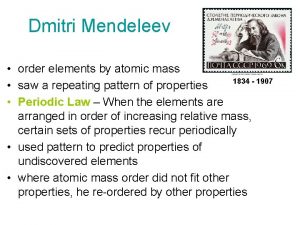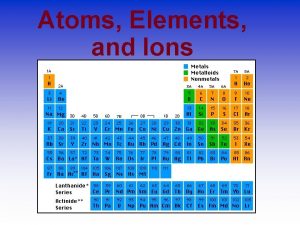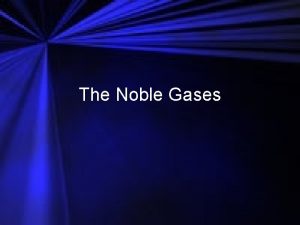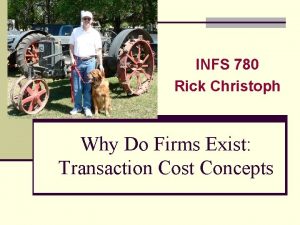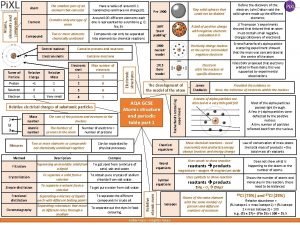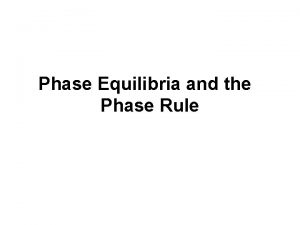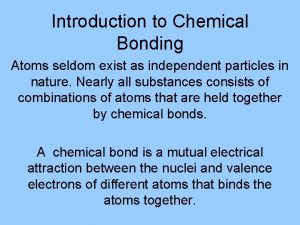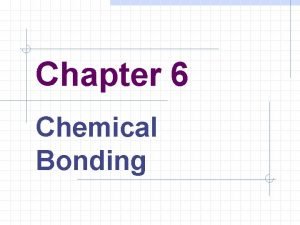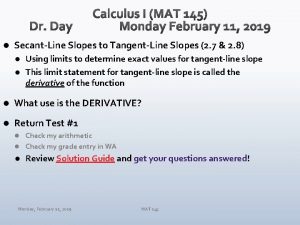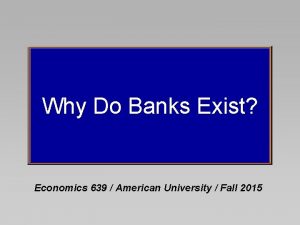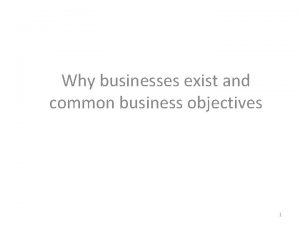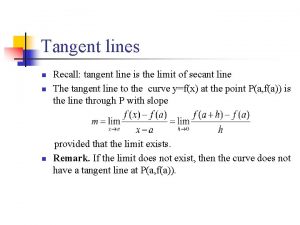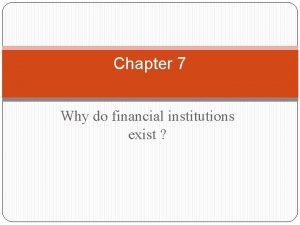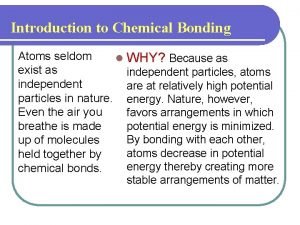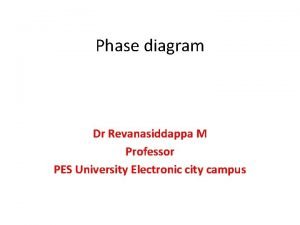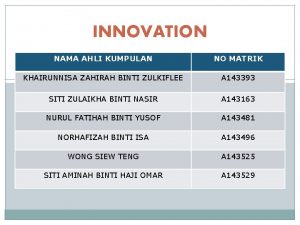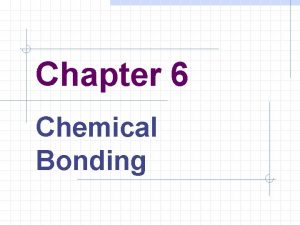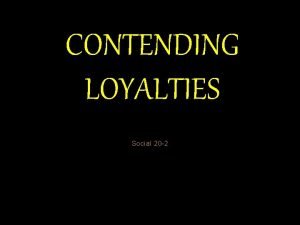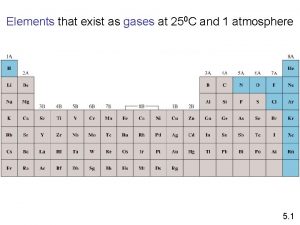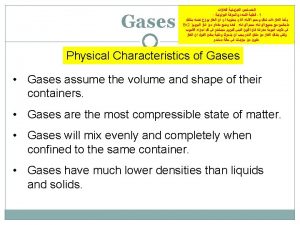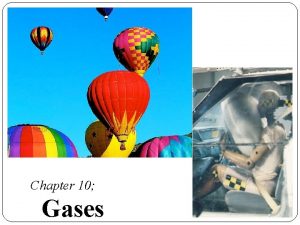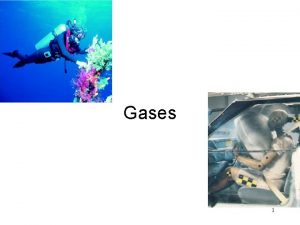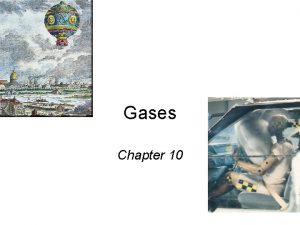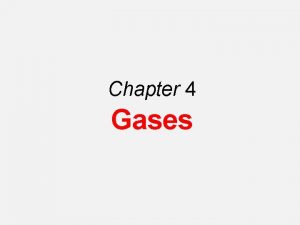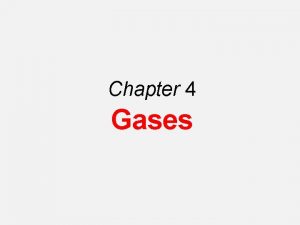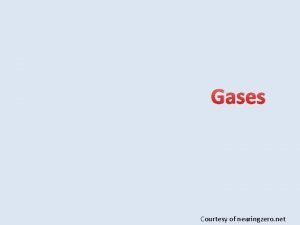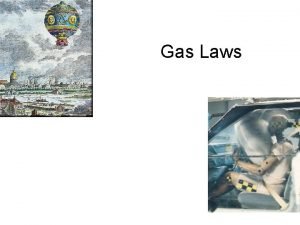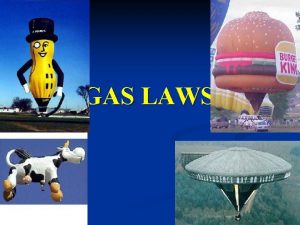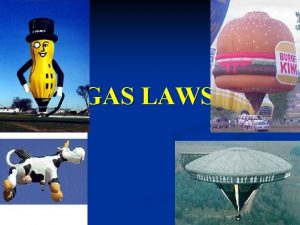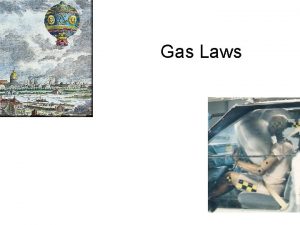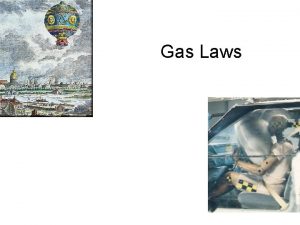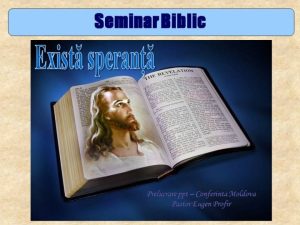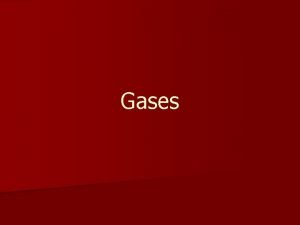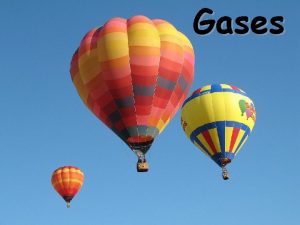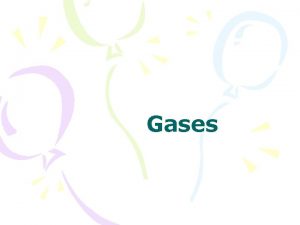Gases Elements that exist as gases at 250






































- Slides: 38

Gases

Elements that exist as gases at 250 C and 1 atmosphere 5. 1

5. 1

Physical Characteristics of Gases • Gases assume the volume and shape of their containers. • Gases are the most compressible state of matter. • Gases will mix evenly and completely when confined to the same container. • Gases have much lower densities than liquids and solids. 5. 1

Force Pressure = Area (force = mass x acceleration) Units of Pressure 1 pascal (Pa) = 1 N/m 2 1 atm = 760 mm Hg = 760 torr = 101, 325 Pa = 14. 7 psi = 29. 92 in. Hg Barometer 5. 2

10 miles 4 miles Sea level 0. 2 atm 0. 5 atm 1 atm 5. 2

Boyle’s Law P α 1/V This means Pressure and Volume are INVERSELY PROPORTIONAL if moles and temperature are constant (do not change). For example, P goes up as V goes down. P 1 V 1 = P 2 V 2 Robert Boyle (1627 -1691). Son of Earl of Cork, Ireland.

Charles’s Law If n and P are constant, then V α T V and T are directly proportional. V 1 V 2 T 1 = T 2 • If one temperature goes up, the volume goes up! Jacques Charles (17461823). Isolated boron and studied gases. Balloonist.

Gay-Lussac’s Law If n and V are constant, then P α T P and T are directly proportional. P 1 P 2 T 1 = T 2 If one temperature goes up, the pressure goes up! Joseph Louis Gay. Lussac (1778 -1850)

Combined Gas Law • The good news is that you don’t have to remember all three gas laws! Since they are all related to each other, we can combine them into a single equation. BE SURE YOU KNOW THIS EQUATION! P 1 V 1 P 2 V 2 = T 1 T 2 No, it’s not related to R 2 D 2

And now, we pause for this commercial message from STP OK, so it’s really not THIS kind of STP… STP in chemistry stands for Standard Temperature and Pressure Standard Pressure = 1 atm (or an equivalent) Standard Temperature = 0 deg C (273 K) STP allows us to compare amounts of gases between different pressures and temperatures

Avogadro’s Law V a number of moles (n) V = constant x n Constant temperature Constant pressure V 1/n 1 = V 2/n 2 5. 3

Ideal Gas Equation Boyle’s law: V a 1 (at constant n and T) P Charles’ law: V a T (at constant n and P) Avogadro’s law: V a n (at constant P and T) Va n. T P n. T V = constant x =R P P R is the gas constant PV = n. RT 5. 4

The conditions 0 0 C and 1 atm are called standard temperature and pressure (STP). Experiments show that at STP, 1 mole of an ideal gas occupies 22. 414 L. PV = n. RT (1 atm)(22. 414 L) PV R= = n. T (1 mol)(273. 15 K) R = 0. 082057 L • atm / (mol • K) 5. 4

Density (d) Calculations PM m d= = V RT m is the mass of the gas in g M is the molar mass of the gas Molar Mass (M ) of a Gaseous Substance Solve for n, which = mass/molar mass Or, M= d. RT P d is the density of the gas in g/L 5. 4

A 2. 10 -L vessel contains 4. 65 g of a gas at 1. 00 atm and 27. 00 C. What is the molar mass of the gas? PV = n. RT 2. 10 L X 1 atm n= 0. 0821 L • atm mol • K x 300. 15 K n = 0. 0852 mol n= g M M = 54. 6 g/mol 5. 3

Gas Stoichiometry What is the volume of CO 2 produced at 370 C and 1. 00 atm when 5. 60 g of glucose are used up in the reaction: C 6 H 12 O 6 (s) + 6 O 2 (g) 6 CO 2 (g) + 6 H 2 O (l) g C 6 H 12 O 6 mol C 6 H 12 O 6 5. 60 g C 6 H 12 O 6 x 6 mol CO 2 1 mol C 6 H 12 O 6 x = 0. 187 mol CO 2 180 g C 6 H 12 O 6 1 mol C 6 H 12 O 6 V= n. RT = P mol CO 2 V CO 2 L • atm x 310. 15 K mol • K 1. 00 atm 0. 187 mol x 0. 0821 = 4. 76 L 5. 5

Dalton’s Law of Partial Pressures V and T are constant P 1 P 2 Ptotal = P 1 + P 2 5. 6

Consider a case in which two gases, A and B, are in a container of volume V. n. ART PA = V n. A is the number of moles of A n. BRT PB = V n. B is the number of moles of B PT = PA + PB PA = XA PT n. A XA = n. A + n. B XB = n. A + n. B PB = XB PT Pi = Xi PT mole fraction (Xi) = ni n. T 5. 6

A sample of natural gas contains 8. 24 moles of CH 4, 0. 421 moles of C 2 H 6, and 0. 116 moles of C 3 H 8. If the total pressure of the gases is 1. 37 atm, what is the partial pressure of propane (C 3 H 8)? Pi = Xi PT PT = 1. 37 atm 0. 116 Xpropane = 8. 24 + 0. 421 + 0. 116 = 0. 0132 Ppropane = 0. 0132 x 1. 37 atm = 0. 0181 atm 5. 6

Bottle full of oxygen gas and water vapor 2 KCl. O 3 (s) 2 KCl (s) + 3 O 2 (g) PT = PO 2 + PH 2 O 5. 6

5. 6

Chemistry in Action: Scuba Diving and the Gas Laws P Depth (ft) Pressure (atm) 0 1 33 2 66 3 V 5. 6

Kinetic Molecular Theory of Gases 1. A gas is composed of molecules that are separated from each other by distances far greater than their own dimensions. The molecules can be considered to be points; that is, they possess mass but have negligible volume. 2. Gas molecules are in constant motion in random directions. Collisions among molecules are perfectly elastic. 3. Gas molecules exert neither attractive nor repulsive forces on one another. 4. The average kinetic energy of the molecules is proportional to the temperature of the gas in kelvins. Any two gases at the same temperature will have the same average kinetic energy 5. 7

Kinetic theory of gases and … • Compressibility of Gases • Boyle’s Law P a collision rate with wall Collision rate a number density Number density a 1/V P a 1/V • Charles’ Law P a collision rate with wall Collision rate a average kinetic energy of gas molecules Average kinetic energy a T Pa. T 5. 7

Kinetic theory of gases and … • Avogadro’s Law P a collision rate with wall Collision rate a number density Number density a n Pan • Dalton’s Law of Partial Pressures Molecules do not attract or repel one another P exerted by one type of molecule is unaffected by the presence of another gas Ptotal = SPi 5. 7

Deviations from Ideal Behavior 1 mole of ideal gas PV = n. RT PV = 1. 0 n= RT Repulsive Forces Attractive Forces 5. 8

Effect of intermolecular forces on the pressure exerted by a gas. 5. 8

Van der Waals equation nonideal gas 2 an ( P + V 2 )(V – nb) = n. RT } } corrected pressure corrected volume 5. 8

Velocity of a Gas The distribution of speeds of three different gases at the same temperature The distribution of speeds for nitrogen gas molecules at three different temperatures urms = M 3 RT 5. 7

Gas diffusion is the gradual mixing of molecules of one gas with molecules of another by virtue of their kinetic properties. NH 4 Cl NH 3 17 g/mol HCl 36 g/mol 5. 7

Gas Diffusion relation of mass to rate of diffusion • HCl and NH 3 diffuse from opposite ends of tube. • Gases meet to form NH 4 Cl • HCl heavier than NH 3 • Therefore, NH 4 Cl forms closer to HCl end of tube.

GAS DIFFUSION AND EFFUSION • diffusion is the gradual mixing of molecules of different gases. • effusion is the movement of molecules through a small hole into an empty container.

GAS DIFFUSION AND EFFUSION Graham’s law governs effusion and diffusion of gas molecules. KE=1/2 mv 2 Rate of effusion is inversely proportional to its molar mass. Thomas Graham, 1805 -1869. Professor in Glasgow and London.

GAS DIFFUSION AND EFFUSION Molecules effuse thru holes in a rubber balloon, for example, at a rate (= moles/time) that is • proportional to T • inversely proportional to M. Therefore, He effuses more rapidly than O 2 at same T. He

Graham’s Law Problem 1 1 mole of oxygen gas and 2 moles of ammonia are placed in a container and allowed to react at 850 degrees celsius according to the equation: 4 NH 3(g) + 5 O 2(g) --> 4 NO(g) + 6 H 2 O(g) Using Graham's Law, what is the ratio of the effusion rates of NH 3(g) to O 2(g)?

Graham’s Law Problem 2 What is the rate of effusion for H 2 if 15. 00 ml of CO 2 takes 4. 55 sec to effuse out of a container?

Graham’s Law Problem 3 What is the molar mass of gas X if it effuses 0. 876 times as rapidly as N 2(g)?
 Tìm vết của mặt phẳng
Tìm vết của mặt phẳng Sau thất bại ở hồ điển triệt
Sau thất bại ở hồ điển triệt Thể thơ truyền thống
Thể thơ truyền thống Hãy nói thật ít để làm được nhiều
Hãy nói thật ít để làm được nhiều Thơ thất ngôn tứ tuyệt đường luật
Thơ thất ngôn tứ tuyệt đường luật Tôn thất thuyết là ai
Tôn thất thuyết là ai Ngoại tâm thu thất chùm đôi
Ngoại tâm thu thất chùm đôi Chiến lược kinh doanh quốc tế của walmart
Chiến lược kinh doanh quốc tế của walmart Gây tê cơ vuông thắt lưng
Gây tê cơ vuông thắt lưng Block nhĩ thất cao độ
Block nhĩ thất cao độ Which elements exist as diatomic molecules
Which elements exist as diatomic molecules Which elements exist as diatomic molecules
Which elements exist as diatomic molecules Are noble gases representative elements
Are noble gases representative elements Composite attribute example
Composite attribute example Why do firm exist
Why do firm exist What is development gap
What is development gap Smallest part of an element
Smallest part of an element Do growing pains exist
Do growing pains exist Why do markets exist
Why do markets exist Have e has present perfect
Have e has present perfect In water system, the three phases exist in equilibrium at
In water system, the three phases exist in equilibrium at Atoms seldom exist as independent particles
Atoms seldom exist as independent particles Atoms seldom exist as independent particles
Atoms seldom exist as independent particles Where does derivative not exist
Where does derivative not exist Did maximus really exist
Did maximus really exist Exist adjective
Exist adjective Why do banks exist
Why do banks exist Why do different types of businesses exist
Why do different types of businesses exist Racial etiquette region
Racial etiquette region Do pirates still exist
Do pirates still exist When derivative does not exist
When derivative does not exist Why do financial institutions exist
Why do financial institutions exist Disulfur decabromide formula
Disulfur decabromide formula Lead silver system diagram
Lead silver system diagram No matrik
No matrik Atoms seldom exist as independent particles
Atoms seldom exist as independent particles Non-nationalist loyalties
Non-nationalist loyalties German vikings
German vikings A current is said to exist whenever _____.
A current is said to exist whenever _____.










